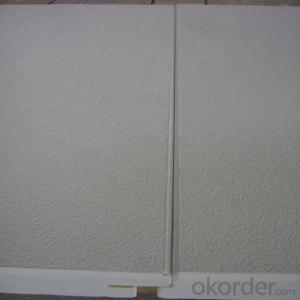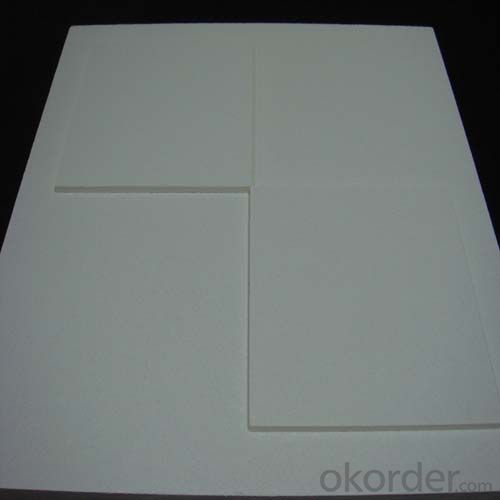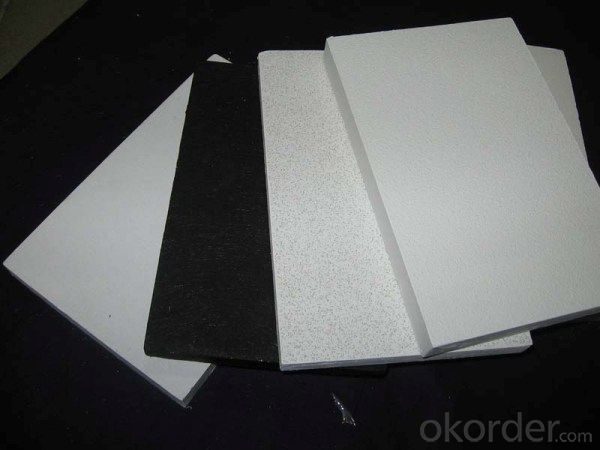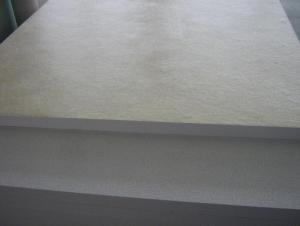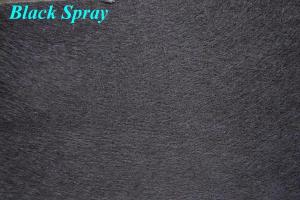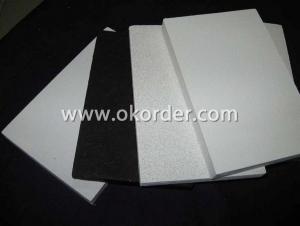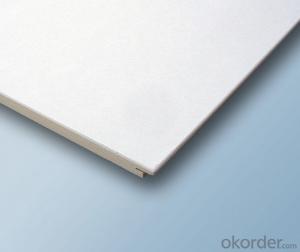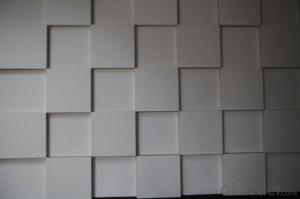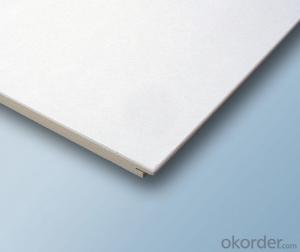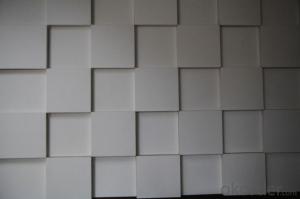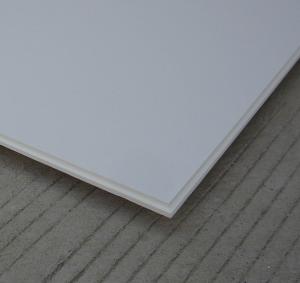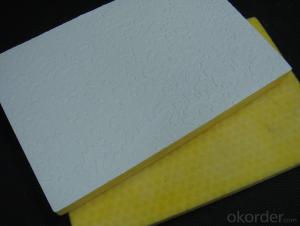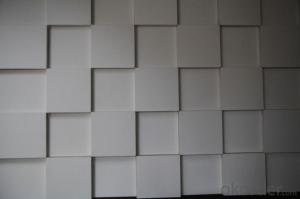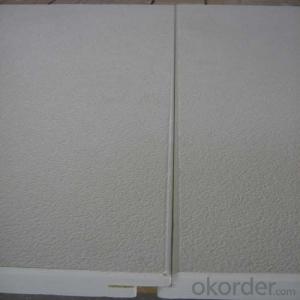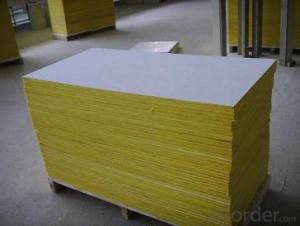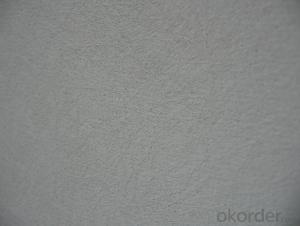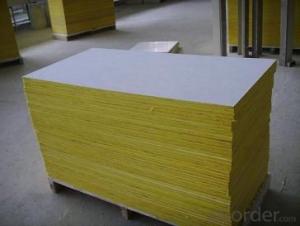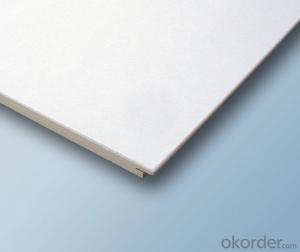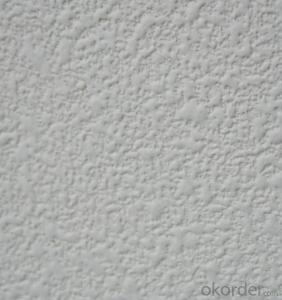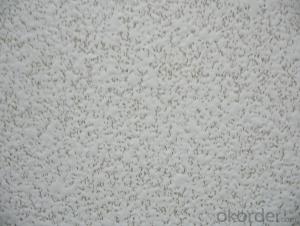Armstrong Ceiling Tiles 2x4 Fiberglass - Density 130k Good Sale
- Loading Port:
- Shanghai
- Payment Terms:
- TT OR LC
- Min Order Qty:
- 4000 m²
- Supply Capability:
- 50000 m²/month
OKorder Service Pledge
OKorder Financial Service
You Might Also Like
The tiles are manufactured from high density fiberglass wool.The visible face has a decorative fiberglass tissue and the back of the tile is covered with normal tissue.The four edges of the tile are sealed and have grooves. It can be jointed together without suspended system. The tiles will cover the suspension system after installation. They are are suitable for loe flap ceiling space and concrete-made, wooded-made or gymsum ceiling.
Installation method:
Use screw to fix the smooth roof. The tiles can be connected after making grooves on each two jointed edges.
Tiles are easy to trim and install
Both inches and metric grids are available
Main Characteristic:
Non-combustible
No sagging,wrapping or delaminating
Green building material
Excellent sound absorption
Application:
Halls,classrooms,offices,shopping centers.etc.
Acoustic fiberglass ceiling contains a better perfomance in tension strong, light weight, so it is easy to trim and install for interior decoration, with T-grids for suspension system or glue, nail or good material could come with fiberglass ceiling baord. Thus an excellent artical work need a high quality acoustic ceiling board, also high quality.
Energysaving is a trend for our 21' era, new product like fiberglass ceiling tile could in place of traditional products one day. Which depends on functional characters: little deflection of geometry dimention, no radiocative property, specific activity of 226Ra: Ira ≤1.0 and specific activity of 226 Ra 232 Th, 40 K: Ir ≤ 1.3. Both products and packages can be recycled.
- Q: I'm finishing my basement in a newer home (built in 2005). The main level floor / basement ceiling is built with I-joists 16 OC. The main level is mainly hardwood floor, and I plan to have a home theater in the basement. I'd like to cut down on the noise from the hardwood floor above (walking in shoes is very loud!) and noise from the theater from coming upstairs. Any suggestions on how to accomplish this? I was thinking spray foam would be perfect, but man is that stuff expensive. Any other best bet suggestions?Thanks!
- I will answer mine with a combination of two people who have already answered. H.K. got it right. Use sound proofing insulation in between your floor joists which is extremely high in density. It's a combination of cellulose and fiberglass that creates an extremely dense soundproofing. I know James Manville makes it and Owens Corning may also. This may not be in stock at your local Do-It-Yourself center and may need to be special ordered. It's more expensive than normal insulation, but much cheaper than the spray in foam alternative. Next, follow it up with the RC channel that Woodtick recommended. These will be screwed in perpendicular to the floor joists and you will then screw your sheetrock directly into those. What this does is creates a space in between the floor joists and the sheetrock and evenly disperses sound traveling through them from the floor joists. They should be in stock at your local Do-It-Yourself center. These two steps are very similar to how many hotels soundproof rooms. If you don't want to make the ceiling permanent by rocking it, then you can install a drop ceiling and use high density foam tiles made for soundproofing. This will be more expensive than rocking, and is much more time consuming to install, but you will have access to pipes or electrical that run in the floor joists. No matter what you do, you will not be able to completely eliminate the noise, but this will give you your best outcome for your budget. Keep in mind noise will transfer through the heating and cooling ducts also.
- Q: Home improvement materials used most of the main, what?
- Tiles, wood flooring, man-made sheet, paint, wallpaper paint, hardware, cabinets, sanitary ware, hardware, electrical appliances (kitchen and toilet), lamps curtains,
- Q: Upstairs tenants always make the floor Dong Dong Dong how to do?
- There are children like this, no way, sound absorption of the ceiling is called glass plate But you should let the upstairs installed sound of the floor, after all, they have children, If not yet you buy a ball every day in your home ceiling throw the ball, remember to quiet time in their home to throw Oh, let his family cry, do not let you sleep all the family do not sleep / but be careful not to play To the light is not good Oh, this way I used to use Oh,
- Q: I wonder if there is fibreglass in it.It is easily scraped off, but creates dust from particles.I could remove it myself, but am wary of the dangers it might pose to lungs.There are no windows to the classroom. A student told me that it exacerbates his asthma.The schoolboard solution is to cover it up with a hanging tiledceiling.Is that reasonable?No money in education for removal, unless dangerous. Do I have any reason for concern?
- If it is indeed dangerous, then it would have to be professionally removed. YOU would have to have the STATE come in and test the material. Renovation and Repair Contents Techniques for Protecting Occupants from Renovation Pollutants References and Resources Renovation is one of the major causes of poor indoor air quality (IAQ) in schools, and is often conducted while the building is occupied.
- Q: Why is the state of magnesium dichloride at room temperature?
- Solid, is a crystal.
- Q: we have numerous recessed light fixtures in our ceiling. Is fiberglass insulation flammable?
- Is Loft Insulation Flammable
- Q: What equipment they need to build a studio, there is no detailed list and price. Mainly recording the kind of studio studio.
- As the production of the program, the sound effect is higher, so the indoor wall or the construction of sandwich wall approach to solve, if conditions, in the sandwich put some soundproof glass fiber and other effects better. The choice of doors and windows can be used acoustic doors, double windows, and in the doors and windows plus nail insulation materials. The overall noise rating of NG is generally 25-30 (based on architectural design). The size of the suction volume should be based on the need. The sound volume is small, the whole sound reverberation time is long, it sounds like a rich and plump. The sound volume is large, the whole sound reverberation time is short, it sounds very clear. In order to make the size of the suction volume can be suitable for the needs of indoor ceilings and walls can be used with the corresponding sound-absorbing materials such as porous sound-absorbing material, or the shape of the wall structure; perforated plate resonant sound absorption structure;
- Q: Know please elaborate, concrete like, wrapped Nao sand, sticky yarn and the like, thank you.
- Generally do not understand to go to check Encyclopedia (do not waste your points) made of molten glass with very fine fibers, insulation, heat resistance, corrosion resistance, high mechanical strength. Used as insulation materials and fiberglass raw materials.
- Q: We just had our first child, and his room is right above the garage. It is noticebly colder in his room, especially the floor. I used the plastic window kits and that helped, however, the floor is still extremely cold and I would like to at least check the insulation in the garage ceiling. Right now there is drywall on the ceiling, but I have no qualms about ripping it down, not real worried what it looks like. What should I look for...I believe there is very old (50 years) fiberglass insulation but i'm not 100% sure. If there is the old insulation there...should I look to replace it? If so, with what R value...Is this a project that someone without specific experience in the field could complete? I'm pretty handy but certainly not a pro. I'm not worried at all how it looks in the garage.
- The joists are probably 2X8 in which case you can use an R30 fiberglass batt. I would use unfaced and then staple up plastic. That will provide a better moisture and draft protection than the faced insulation would.
- Q: I am doing some minor remodeling on a house. I wanted texture on the walls but didn't want to deal with the mess (and expertise required) of spray texture, so I'm creating a custom texture on the walls by hand using lite joint compound and a 12" taping knife. My question is: what do I do on the ceilings? Can I do the same thing on the walls, or will I kill my back (especially if it needs sanding). I've heard of people wrapping a small piece of plywood in plastic and using it to apply joint compound to the ceiling such that it creates little stalactites that you knock down after they have hardened slightly. That sounds difficult to get uniform across the entire ceiling.What should I do?
- Texture done easy. Mix (I used sand texture) texture with water until it is 'paintable' then apply with a knobby roller. Done.
Send your message to us
Armstrong Ceiling Tiles 2x4 Fiberglass - Density 130k Good Sale
- Loading Port:
- Shanghai
- Payment Terms:
- TT OR LC
- Min Order Qty:
- 4000 m²
- Supply Capability:
- 50000 m²/month
OKorder Service Pledge
OKorder Financial Service
Similar products
Hot products
Hot Searches
Related keywords
